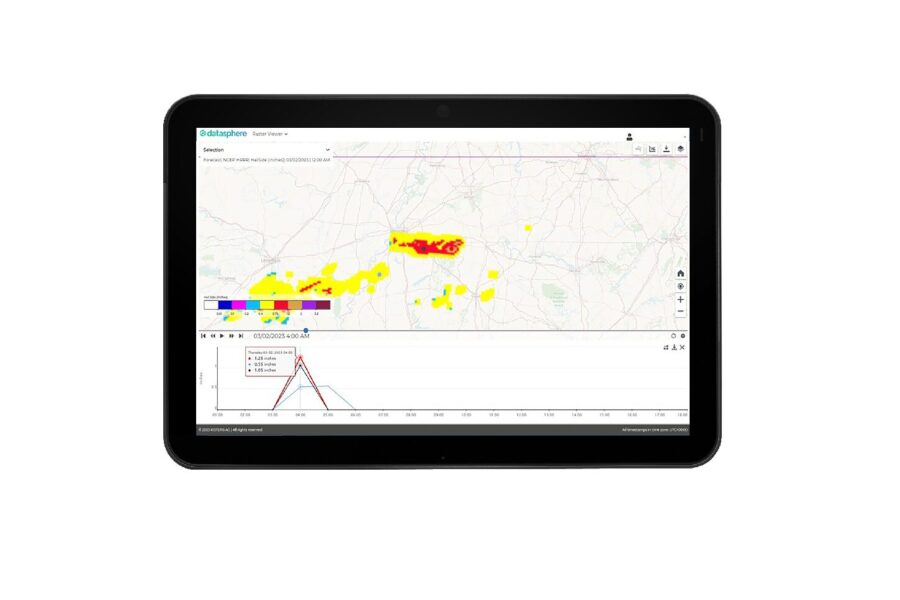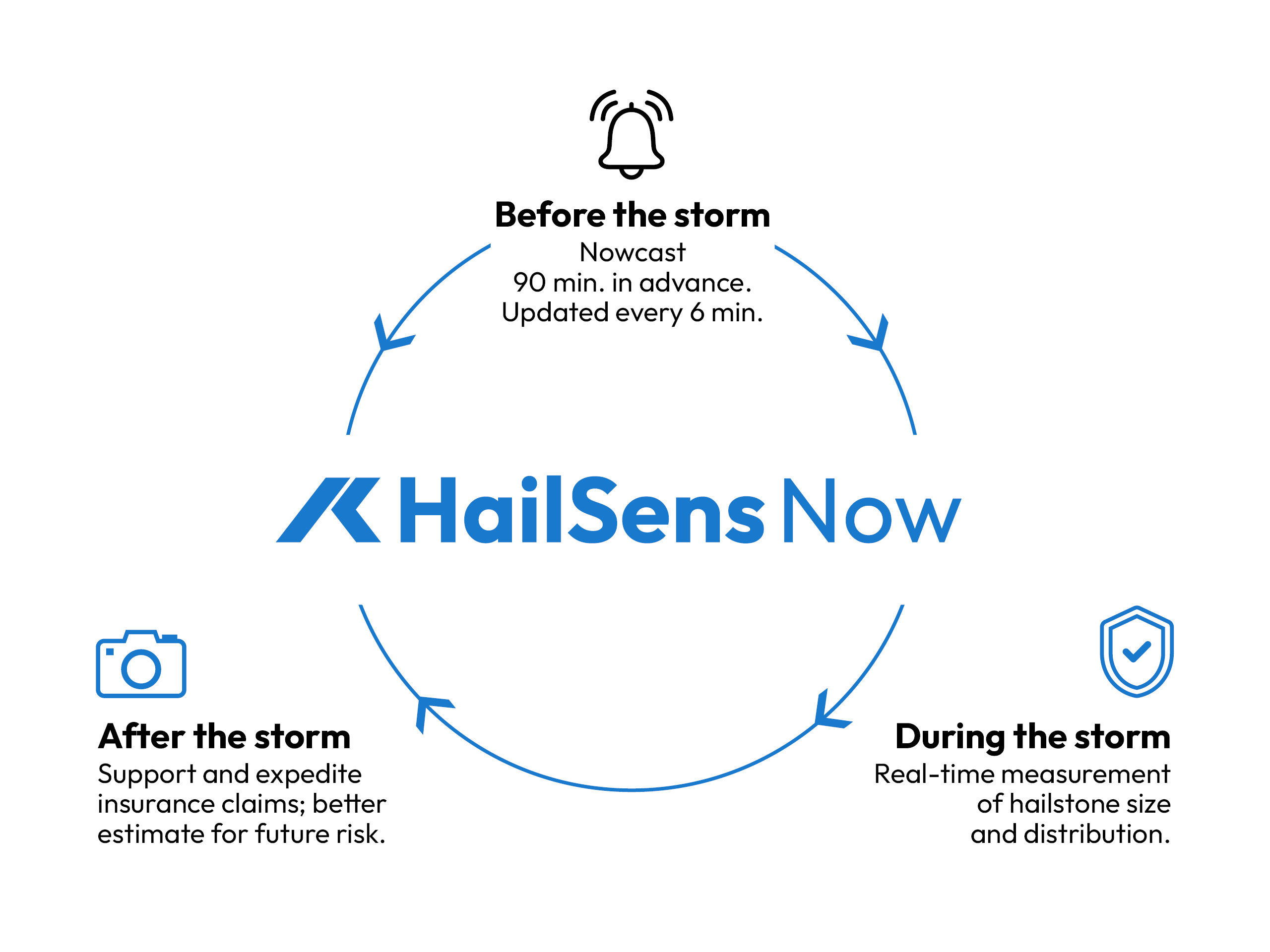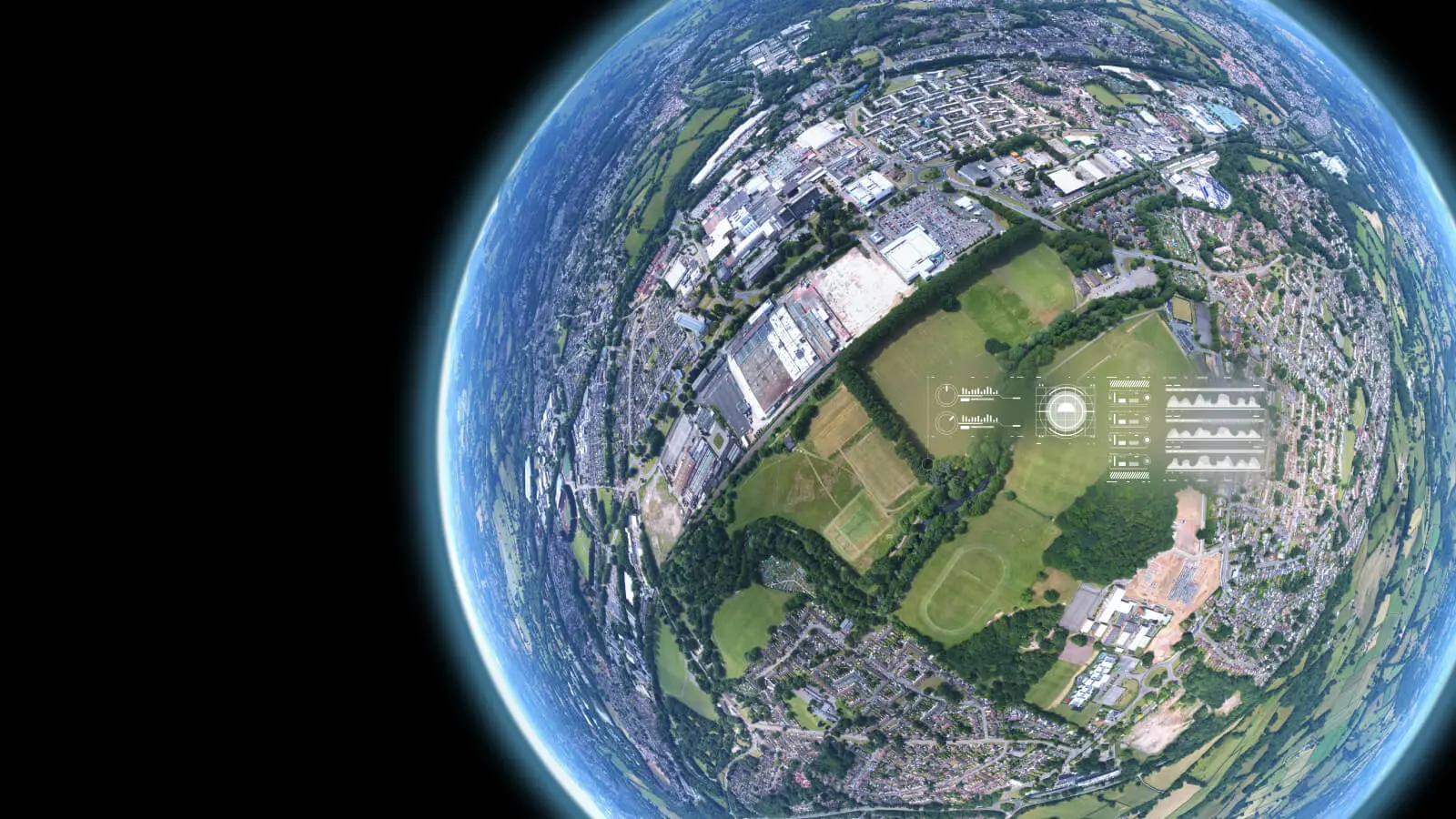When every minute counts.
Hail Warning System | Precise. Timely. Actionable.

Advance warning, smarter decisions.
Communities and businesses are increasingly at risk from hailstorms. HailSensNow leverages radar data and proprietary algorithms to improve the accuracy of hailstorm forecasts, predicting both hail size and potential damage.
Our precise, real-time alerts provide the information you need to stay ahead of the storm—helping you make informed decisions to stay safe and reduce hail-related losses.

Why choose HailSens Now?
- 9x the spatial resolution & 10x the temporal resolution of publicly available models
- Get alerts up to 90 minutes before hail impact
- Take preemptive action to avoid or minimize damage
- Download detailed insights to attach to claims
- Review archived events to ensure adequate coverage for the future
Who can benefit?
- Solar operators
- Fleet managers
- Public Works crew leaders
- P&C insurance policyholders
- Parametric insurance policyholders
$368 billion
global natural disaster losses in 2024
$56.5 billion
U.S. severe convective storms (SCS) losses in 2024
1682
U.S. 2+ inches hail reports in 2023

Advantages.
Use case
Solar projects.
High accuracy nowcasts with advanced warnings enable solar operators to stow PV panels with oncoming hailstorms. APIs seamlessly stream nowcast, real-time, and post-event data to your existing IT systems.
Use case
Vehicle fleets.
Use case
Public works.
Field crews maintain public infrastructure. As they perform flood prevention tasks, they can be exposed to intensifying storms.
Use case
Insurance policies.
HailSensNow allows insurers to notify their policyholders to protect themselves, their employees and their assets. Proactive communication increases trust between insurer and policyholder.



We want to enable organizations to protect assets from hail damage before a storm... our system can predict, precisely quantify and validate hail. The most relevant information is sent to operators to support decisions of risk.
Johan Jacques, Chief Meteorologist at KISTERS HydroMet
FAQs
Do I need to download an app?
No need for users to download an app. HailSens Now sends alerts via SMS / text. Email alerts also available.
Integrate this hail warning system with SCADA systems via API; contact us to discuss.
Who's HailSens Now designed for?
How does HailSens Now differ from HailSens360?
HailSens Now focuses on imminent risks before and during hailstorms.
For a longer timescale, HailSens360 synthesizes 24-48 hours forecasts, nowcast data, and meticulous post-event analysis detailing the full scope of a hail event. Pre- and post-event insights go beyond generalized weather data to deliver a proprietary forecast/nowcast solution. Meteorologists, atmospheric physicists, data scientists and insurance underwriters may use datasets from past and future hail events to refine forecast models and advance severe weather research.
What is HailSens IoT?
HailSens IoT is a real-time hail sensor with online data visualization via KISTERS datasphere. Mounted to a pole & connected to a power source, it is able to discern hail, ice pellets, and rain. Mics measure the kinetic energy as hailstones hit the plate of the sensor. An integrated microcontroller translates this information into hail sizes and storm intensity. The real-time data are sent to triage inspections, support insurance claims, and enhance operational improvements.
